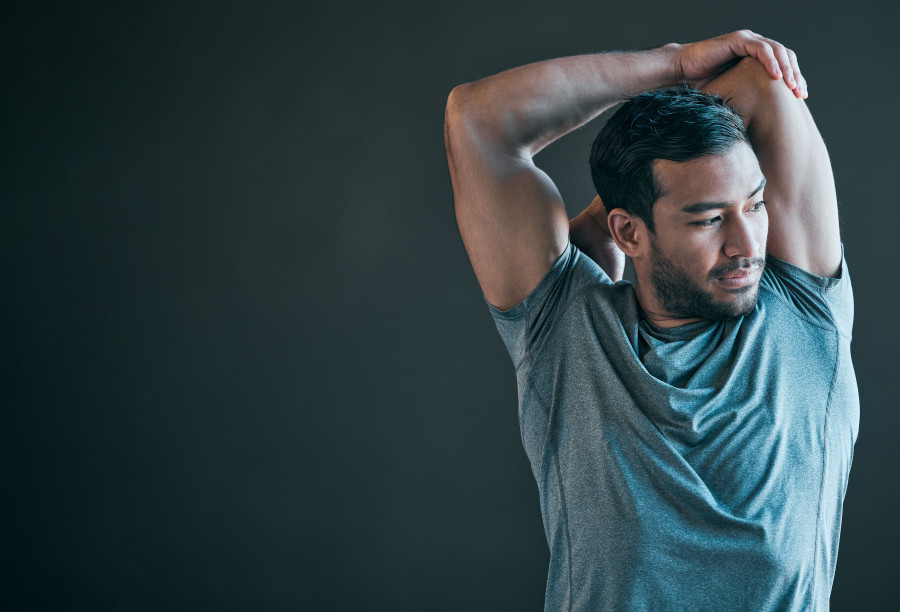Life & Style
Why warmups are essential
Bivek Bikrant Adhikari talks about the role of light movements in preventing injuries and optimising performance, and the risks of skipping this essential step.
Anish Ghimire
It is important to give our body the proper warm-up before engaging in any physical activity, be it a football match at the pitch or a gym workout. Warm-ups are more than simply a way to loosen up our muscles; they ready us for any workout by preparing our body for maximum efficiency and lowering the chances of injury.
Bivek Bikrant Adhikari, an athletic therapist and performance coach, discusses the nature, vitality and varying factors of warmups necessary before taking part in any type of workout or sport.
He graduated in athletic training from Southwestern Oklahoma State University and has experience working with the Nepal national football team, both male and female. Along with the national team, he also worked with the A-division football clubs of Nepal, Sankata FC and Khumaltar FC.
Why are warmups important before starting any exercise or workout?
Warmups are vital before any exercise or workout for several key reasons. Firstly, they act as a protective shield against injuries by preparing the body for the physical demands ahead. By gradually increasing blood flow to muscles, warmups enhance flexibility, minimising the risk of strains and sprains.
Moreover, warmups lay the groundwork for peak performance. They stretch and prime muscles for action, optimising their function during sports or workouts. This pre-exercise stretching enhances flexibility and improves circulation, delivering vital nutrients and oxygen to muscles, thereby enhancing endurance and stamina.
From a cardiovascular standpoint, warmups play a pivotal role in preventing sudden spikes in heart rate. They gently elevate heart rate and breathing, gradually acclimating the cardiovascular system to the impending exertion. By doing so, warmups prepare the heart and lungs for the increased demands of exercise, promoting efficient oxygen delivery and overall cardiovascular health.
What specific warmup exercises do you recommend for different types of workouts?
Obviously, warmups are crucial before any exercise, and their specifics vary based on the activity planned. Whether it’s endurance training or strength-building exercises, the warmup routine aims for three essential goals: joint mobility, muscle flexibility and heart rate regulation.
Firstly, focusing on joint mobility ensures that the joints move through their full range of motion. This prepares them for the stresses of exercise and reduces the risk of injury.
Secondly, muscle flexibility is key. Stretching properly before exercise helps loosen tight muscles, enhances flexibility and improves overall performance during the workout. It also reduces the chances of muscle strains or tears.
Lastly, regulating the heart rate is vital for cardiovascular health. Light cardio movements like jumping jacks or jogging in place gradually elevate the heart rate, preparing the cardiovascular system for more intense activity.
Should warmups vary based on factors like age, fitness level or type of activity?
When considering age, particularly for older adults, certain adjustments are necessary to ensure their safety and effectiveness during warmups. For older individuals, joint mobility may be compromised due to factors like ageing or previous injuries. Therefore, special attention must be paid to gently mobilising their joints, allowing for a gradual increase in flexibility without causing discomfort or strain.
Moreover, the muscles of older adults tend to be stiffer and less flexible compared to younger individuals. This stiffness can make general movements challenging and increase the risk of injury if not addressed properly. Hence, warmup routines for older adults should focus on gentle stretching and movements tailored to their specific needs, aiming to gradually loosen tight muscles and improve flexibility over time.
It’s essential to take a lighter approach initially, gradually increasing the intensity as the joints and muscles become more flexible and responsive. By doing so, we can help older adults safely prepare their bodies for exercise, reducing the risk of injury and promoting overall health and well-being.
What are the potential risks of skipping a warmup before exercising?
Skipping a warmup before exercising can expose the body to a range of potential risks and consequences, impacting both short-term performance and long-term health. Firstly, without adequately lubricating the joints through warmup exercises, individuals increase the likelihood of experiencing degenerative changes in the joints over time. The lack of joint lubrication can also result in stiffness and discomfort during exercise, limiting the range of motion and predisposing individuals to joint injuries.
Furthermore, muscles not properly prepared for exercise are more susceptible to strain, tears and other injuries. Warmup exercises help increase blood flow to the muscles, and enhance muscle elasticity and neuromuscular coordination. Strained or torn muscles can significantly impede physical activity, causing pain, discomfort and prolonged recovery periods.
In terms of cardiovascular readiness, skipping a warmup can lead to imbalances in heart rate and blood flow, resulting in premature fatigue and decreased exercise tolerance. When the heart rate isn’t well regulated before exercise, individuals may experience rapid exhaustion, diminished performance and an increased risk of cardiovascular events.
Are there any signs or indicators during warmups that suggest an individual is adequately prepared for the workout?
Several signs during warmups can suggest that an individual is adequately prepared for their workout. One prominent indicator is the onset of sweating and an increase in body temperature. As the body warms up, blood flow to the muscles increases, and sweat production helps regulate body temperature, indicating that the cardiovascular system is engaged and preparing for the demands of exercise.
Additionally, individuals may experience a sensation of increased flexibility and mobility during warmups. As muscles and joints become more supple and responsive to movement, individuals may notice a reduction in feelings of stiffness or tightness, indicating improved muscle elasticity and joint mobility.
Moreover, individuals often report a subjective feeling of readiness and preparedness for exercise as they progress through their warmup routine. This feeling of readiness may include a sense of alertness, energy and mental focus, signalling that the body and mind are primed for physical activity.
However, there is no exact indicator of readiness during warmups.




 18.12°C Kathmandu
18.12°C Kathmandu










